




Free Web Presence Review

Get a professional review of your site and competition to learn where you stand, what to fix and how to move forwards. No obligation and we guarantee you’ll find value in the review. advertising.ulusolutions.com


















Get a professional review of your site and competition to learn where you stand, what to fix and how to move forwards. No obligation and we guarantee you’ll find value in the review. advertising.ulusolutions.com











Welcome to GRAND, the premier lifestyle publication for active adults aged 50 and over living on beautiful Vancouver Island.
We aim to provide insightful and engaging content that you want to read with a focus on your community—your neighbours and friends who are passionate about volunteerism, travel, dining, their families, pets and gardening.
What’s not to love? We want to bring you stories and features that celebrate the unique lifestyle of the Island.
Travel destination guides, tips for seniors on the move and local hot spots will fill these pages. Are you interested in articles on pet care, adoption stories and tips for pet owners? We have what you are looking for.
Got a foodie in your house? Restaurant reviews, culinary trends and profiles of local chefs and eateries are what we live for.
We know that volunteer work is at the heart of community on the Island. We will feature profiles of local volunteers and organizations, highlighting opportunities for you to get involved.
We will help you sort through the overwhelming mound of information out there, so you can take care of your physical and mental health. Whether it’s tips on getting active safely, healthy eating, skin care or connecting with your family, we’ve got you covered.
Do you have a story idea for us? Share it with us by emailing editor@islandparent.ca.
Now, turn the page and let’s celebrate who you are!
“I
’m totally addicted!”
Lora Lonesberry started highperformance driving during the pandemic. While most people were slowing down, she was revving up and exploring her need for speed with her heavily modified 2019 BRZ Subaru.
“It is such an adrenaline rush!” exclaims the Victoria resident.
Growing up on a farm as one of six kids, Lonesberry has been driving for as long as she can remember.
“We had a VW Beetle that we would use in the fields,” she remembers.
“We would all pile in and cruise out to go get dad for lunch or dinner.”
Driving at a young age got her interested in watching car racing on TV and in person at tracks. Soon the self-proclaimed “race junky” traded the stands for the driver’s seat and Lonesberry now drives on Vancouver Island Motorsport Circuit (VIMC), a motorsports playground and track in Duncan.


Karl Rhynas, the Sales Ambassador for the Vancouver Island Motorsport Circuit, says the track appeals to drivers who want to test themselves and achieve more out of their cars.
“Once you catch the high-performance driving bug, it is really hard to shake!” he adds.
Rhynas has been driving for 15 years and says part of the draw to the sport is the fact that you must have a very clear mind and focus on only what you are doing at the time.
VIMC offers several experiences for drivers of all levels. In addition to its Taste of the Circuit, High Performance Driving, Open Lapping, Drive with a Pro and Circuit Taxi, the track also offers a New Driver Program and Safe Driver Program.
“We have drivers of all ages, and we teach them how to be safe on the road, show them how to change a tire and how to do things like evasive lane changing in the case of an emergency or unexpected situation,” says Rhynas.
Lonesberry got her start driving with the VIMC Taste of the Circuit, where drivers can take the wheel a variety of the track’s 15 cars to get an idea of how each one handles. Drivers have the chance to get behind the wheel of an Alpha Romeo, Porsche, Subaru, BMW, VW, Mercedes and more.
“I am the only client to date who went in the morning and bought another session for that afternoon,” says Lonesberry, adding she has since taken every course VIMC offers.
VIMC is not licensed for wheel-towheel racing so Lonesberry takes her car to Mission Motorsport Raceway to go head-to-head with other drivers.
“Driving wheel-to-wheel is so exhilarating!” she says, adding that she was on a track 38 times last year. “You can’t be thinking about anything else. Just you, your car and the road.”
Some of her greatest achievements include placing first in her class last
Once you get out there, you might be hooked for life!

year in Time Attack at VIMC, and being named Woman Driver of the Year and General Driver of the Year by Victoria Motor Sports Club.
In her down time, Lonesberry also has a racing simulator at home to brush up on her skills.
“It lets me know how far I can push my car in a controlled environment,” she says of the sim.
Although he doesn’t drive wheelto-wheel, Willie Fitterer also frequents VIMC. The 68-year-old has been driving for 15 years, six of those at VIMC.
“VIMC is a world-class track,” he says.
“It is incredibly technical and challenging but small enough that the speeds are still manageable.”
Fitterer drives a 2018 Porsche GT3 and says it is the race for perfection that has him hooked on the sport.
“It is like anything else where perfection is elusive,” he says, adding that he holds the VIMC track record for a manual production car.
“You take several steps forward and a few back. It’s a constant challenge.
It keeps you focused in ways that very few other things can.”
In the years before VIMC was built (prior to 2016), Fitterer used to fly to Birmingham, Alabama to drive on a track.
Lonesberry also has a go kart that she races wheel-to-wheel at VIMC. She says there are more women in karting than endurance driving, and she enjoys the comradery involved in both activities.
“We all help each other out,” she says.
“It seems like it would be such a competitive sport but really, we want to see everyone succeed. If you see something that could help someone improve, you share that with them. It’s like a family with no one left behind.”
She adds that she is a member of Women in Motorsports North America and is often called the “Track Mom” at sporting events.
Fitterer says he gets more satisfaction out of helping others in his club
than he does out of beating his own times.
“There is an incredible culture and comradery,” he says. “You are comparing notes and offering support, trying to help those who are struggling.”
When asked what she would say to someone who is interested in trying out endurance driving but isn’t sure if it’s for them, Lonesberry says: “just get out on a track!”
“Do the Taste of the Circuit, see what you like and don’t like, take classes. They will teach you to maximize your driving in a smooth way. Also, try karting or a simulator to help you learn about recovery with less risk.”
Lonesberry and Fitterer agree that driving on the track has allowed them to be better street drivers.
“When you learn to drive like this, you also learn that pretty much everything you were taught about street driving is either wrong or misused,” says Fitterer.
“Virtually every driver doesn’t use their eyes properly. You need to be looking much further ahead of you because of how fast you are travelling. It’s about learning where to look and understanding your car’s dynamics.”
Both drivers agree that you need to see it to believe it and say many of the people they take out on the track are surprised by how safe and fun endurance driving can be.
“But be careful,” warns Lonesberry. “Once you get out there, you might be hooked for life!”

is the managing editor of GRAND. She runs on exploring new and exciting places and getting to the heart of people’s stories. If you have a story she should know about, reach her at editor@islandparent.ca.
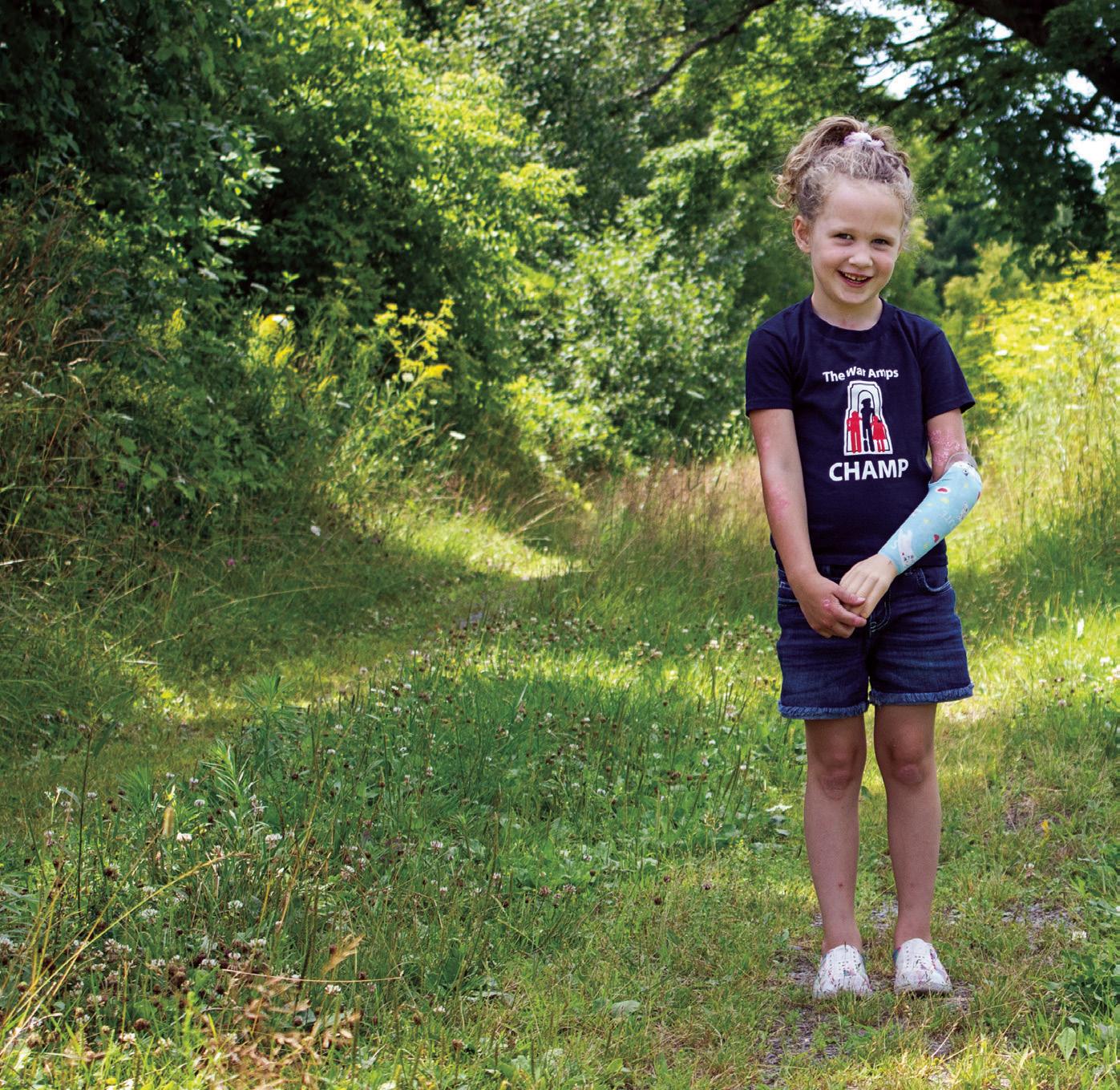
It’s not hard to see why Vancouver Island is home to some incredible wineries.
The vast, deep valleys, rich green forested mountains and breathtaking ocean views provide the perfect setting for a place to raise a glass and share a nibble.
Add to this the fact that the Island boasts some of the most passionate and talented grape growers and winemakers you’ll ever meet, and you have a combination that can only result in greatness.
Committed to making wines that reflect the exceptional soil and growing conditions of the Cowichan Valley, winemaker Dan Wright and his team currently farm 10 acres of grape varieties at Unsworth Vineyards.
They focus on handcrafted wines of distinction using signature techniques that showcase the very best of the fruit and it shows in the flavour.
While you are there, don’t miss Unsworth Restaurant—a culinary celebration of all-things Vancouver Island. From a seasonally inspired menu showcasing fresh, local, sustainable ingredients, to exceptional service and award-winning wines, they


give bold, new meaning to farm-to-table cuisine. Learn more at unsworthvineyards.com
Blue Grouse is one of BC’s oldest wineries. Nestled on 65 acres of Cowichan Valley countryside, this winery and vineyard produces some of the most awarded wines on the Island.
From Pinot Gris, Pinot Noir, Ortega, Bacchus and the rare Black Muscat, Blue Grouse produces new classic wines from old island vines.
Reservations are required but you can’t go wrong with any of the experience options. Our personal favourite is the Grape to Glass Tour, but we have also enjoyed the Lunch for Two and Cowichan Wine and Chocolate Pairing. Learn more at bluegrouse.ca
Church & State Wines strives to produce wines that over-deliver, and the results speak for themselves: the winery has been named producer of Canada’s Best Red Wine seven times since 2009, and received
countless gold medals, best-in-class awards and national trophies for both red and white wines.
Church & State offers a unique experience to guests, just 15 minutes from Downtown Victoria and produces 100 percent BC VQA wines. Brentwood Bay produces traditional artisan sparkling wines from its estate vineyards and is a must-see for anyone in the region. Pouring award-winning wines from both the Vancouver Island estate and Okanagan estate vineyards, Church & State offers an educational experience that shouldn’t be missed. Pop into their bistro for some olives, charcuterie, sandwiches or pizza. Learn more at churchandstatewines.com
Alderlea Vineyards is one of Vancouver Island’s oldest and most respected vineyards, in the Cowichan Valley, near Duncan on Vancouver Island. The estategrown grapes produce a mix of dry white wines including Bacchus, Pinot Gris and Sauvignon Blanc. Red wines comprise Pinot Noir, Clarinet made from old vine Marechal Foch, Merlot and a Cabernet Foch blend known as Matrix.


Zac and Julie took over the awardwinning winery Alderlea Vineyards in April 2017 from Roger and Nancy Dosman whose strong vision for an island vineyard and skilled winemaking made Alderlea one of the pioneers in Vancouver Island winegrowing.
When you visit, you not only get to taste the wine but you can meet the owners and winemakers—the people who are the heart and soul of the wines. Learn more at alderlea.ca
Averill Creek offers something a bit different. Beginning in 2018, with the arrival of Winemaker Brent Rowland, their wines became wild fermented, with no enzymes or nutrients added, and little to no sulphur. Most are unfined and unfiltered.
They also offer a self-guided tasting that is a leisurely approach on the Garden Terrace, where you can enjoy the wines at your own pace.
The Guided Experience is a sit-down tasting held in a private room, or on the outdoor Ocean-view Terrace. The team will provide an in-depth perspective on the winery, including their history, winemaking approach, vineyard management and the regional terroir.
For the wine-nerds and wine-curious, The Full Package offers a private tour in the winery production area, followed by a brief walk in the vines, and a fully guided flight of Estate and Reserve level wines, along with a tasty variety of premium provisions. Learn more at averillcreek.ca.

Vancouver Island’s eclectic mix of food influences and unique sustainable farming philosophy makes it one of the most fascinating places to visit a restaurant.
The landscape allows you to explore local seafood, fresh produce, artisanal ingredients, delectable wines and chefs who are reinventing the ways they put food on the table.
Read on to learn about 10 of our top picks for dining out on the Island.
Marilena Café + Raw Bar (Victoria)
It is no surprise that Marilena Café + Raw Bar was named one of Enroute Magazine’s Top 10 Best Restaurants in Canada. Marilena features global and local seafood paired with farm-fresh high-quality sustainable ingredients that adhere to the highest standards. Guests can choose from a selection of nigiri, sashimi and sushi rolls

at the Japanese raw bar led by Chef Clark Park. Learn more at marilenacafe.com.
Il Terrazzo (Victoria)
Enjoy fine Italian dining in an old-town courtyard setting featuring brick fireplaces and candlelit ambiance. The menu is inspired by Northern Italian cuisine with a Pacific Northwest twist and their certified Sommeliers have created an amazing wine program to complement the offerings. Perfect for a date night! Learn more at ilterrazzo.com
Blue Fox Café (Victoria)
This is THE place for brunch! This restaurant has a cozy vibe and energetic atmosphere and the food is absolutely incredible. Come hungry because portions are huge but be prepared to wait in line during busy times as there are no reservations at this hot spot. Learn more at thebluefoxcafe.com
Alpina Restaurant (Victoria)
This unique restaurant, located in Villa Eyrie Resort, eloquently infuses traditional ingredients and preparation methods from the Alpine regions of Italy, Germany, France and Switzerland. Boasting unforgettable vistas of the Saanich Inlet, Southern Vancouver Island, the Olympic Mountains and Majestic Mount Baker from nearly every table, it offers an interesting dining experience with a view. Learn more at villaeyrie.com/alpina-restaurant.
Mahle House (Nanaimo)
This family-owned and operated fine-dining establishment is situated in
a restored heritage house on a one-acre property featuring an English-style garden. Their philosophy is simple: serve flavourful, interesting food in a welcoming environment with relaxed, professional service—and they nail it! Learn more at mahlehouse.ca.
There is nothing better than the combination of great beer and good food and Beachfire has both! All menu items are made in-house and proudly feature fresh ingredients from local farmers and producers. From light snacks to shareable plates and hearty meals, they have something perfect to accompany their beer and your appetite. Learn more at beachfirebrewing.ca
Savour the day while you taste the freshest fare from local farms and waters, prepared with the passion that embodies Tofino’s little village paradise. This gem is in the heart of Tofino and offers great food and wonderful views. Learn more at shelterrestaurant.com
Located in a newly remodelled Comox Valley Heritage building known to local residents as The Old House, this restaurant has character. Their goal is to seek out and utilize the freshest of local sustainable food to create one of the premier and delectable dining experiences in Comox Valley and on Vancouver Island and they don’t disappoint. Learn more at localscomoxvalley.com.
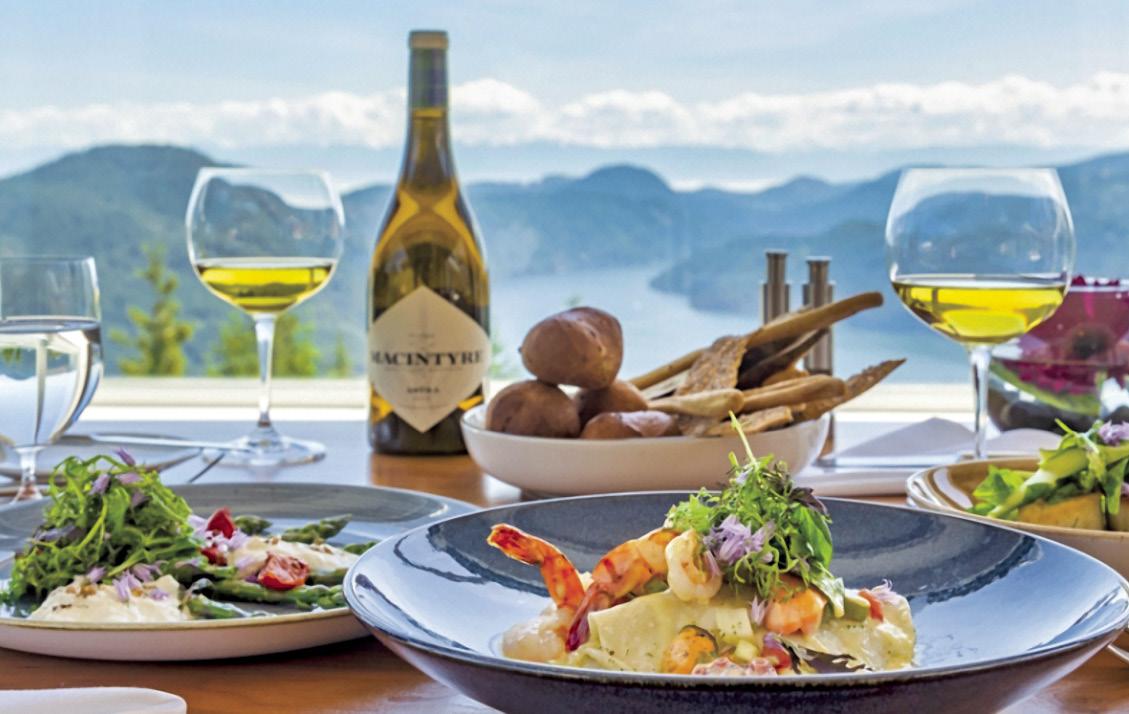
This great little weekend spot is located in the Kingfisher Resort. Your senses will be awakened with an unparalleled West Coast culinary experience and creative cocktails, while gazing out to the vast ocean views. Learn more at kingfisherspa.com/dining
Since first opening its doors in 1924, The Shady Rest Restaurant has been synonymous with family friendly dining beside breathtaking ocean views. Frequented by locals and visitors alike, their menu features a wide variety of approachable items with all budgets in mind. Learn more at shadyrest.ca/restaurant
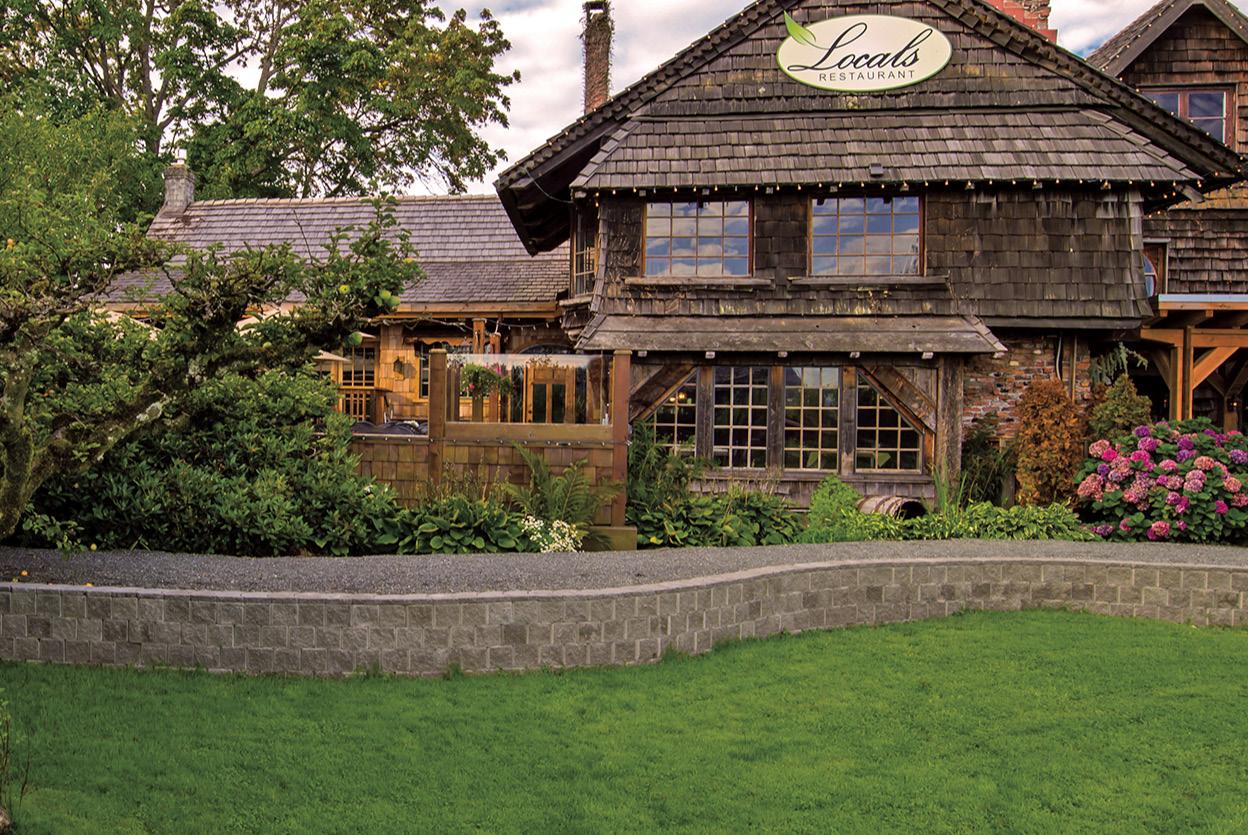

Habitat for Humanity Victoria is a beacon of hope in our community, dedicated to providing affordable homeownership to working families in need. This noble mission is only made possible through the support of volunteers and donors who contribute their time, resources and financial support.
Volunteers are the heart and soul of Habitat for Humanity Victoria. From skilled tradespeople to passionate community members, people from diverse backgrounds come together to lend a hand in building homes. Volunteering isn’t just about constructing houses; it’s about building connections and fostering community. Through their dedication, our volunteers make a tangible impact on the lives of others and gain valuable skills and experiences that last a lifetime.
However, volunteering alone cannot sustain Habi-
tat for Humanity Victoria’s vital work—donations are equally essential.
Financial contributions, in-kind donations and sponsorships from businesses and organizations play a crucial role in funding our home construction projects. Every donation, no matter how big or small, helps to create affordable housing solutions for families in need.
Donating to Habitat for Humanity Victoria is an investment in the future. It’s a way to support stronger families, create more stable communities and a more equitable society. By contributing to affordable homeownership initiatives, donors directly address the pressing issue of housing affordability in our community.
Volunteering your time or donating your resources is vital in building hope and transforming lives. Together, we can make a difference—one home at a time.
Donate today at habitatvictoria.com/donate

If I knew I’d live this long, I would have taken better care of myself.
– Mickey Mantle
It is never too late to start taking better care of ourselves, and the best way to do this is to have a good diet. However, choosing a diet is not an easy thing anymore.
You may be asking yourself, should I be a vegetarian? Follow a paleo diet? Try Keto? Do intermittent fasting? Go straightup carnivore? Or be a vegan?
I started on the path to health through following Macrobiotics, and one of the tenets of this philosophy is that our dietary choice should be made logically, not emotionally. So, let’s have a logical look at which diet might fit your lifestyle.
A Keto diet should only be done for a limited period, as a reset for the metabolism, or for treating neurological disorders and certain types of cancer. According to the National Institute for Health, “the duration of following a ketogenic diet can range from a minimum of two to three weeks up to six to 12 months.”
The paleo diet emphasizes eating those foods our early ancestors ate, including some carbs, along with a lot of exercise, whereas the keto diet radically reduces carbs (along with increasing fat intake). However, sometimes we need carbs, since

they help the body produce serotonin, a calming neurotransmitter. Therefore, the Keto diet can be problematic for some people.
The carnivore diet (pretty much just meat) is becoming more popular, and has been used successfully for treating severe obesity and a range of auto-immune diseases. However, humans are not carnivores but rather omnivores.
The most emotionally-based diet is the vegan diet, which has no historical precedent, since humans cannot follow a vegan diet without modern technology, as vitamin B12 is found exclusively in animal
foods. Vegans make their dietary choice based on concern for other living creatures.
If we settle on the diet that is best for us, and avoid processed foods, excess sugar, too many vegetable oils (except olive oil) and genetically modified foods, we can maintain a diet that will support healthy aging. This approach will also help protect us from two of the most common ailments that accompany aging: low bone density and dementia.
Whichever diet we choose for the long run, it appears that adapting it to intermittent fasting principles will be of benefit to most people.
has worked as a nutritional consultant for over 30 years, the majority of that time for Lifestyle Markets. He is the author of Health Secrets for the 21st Century.




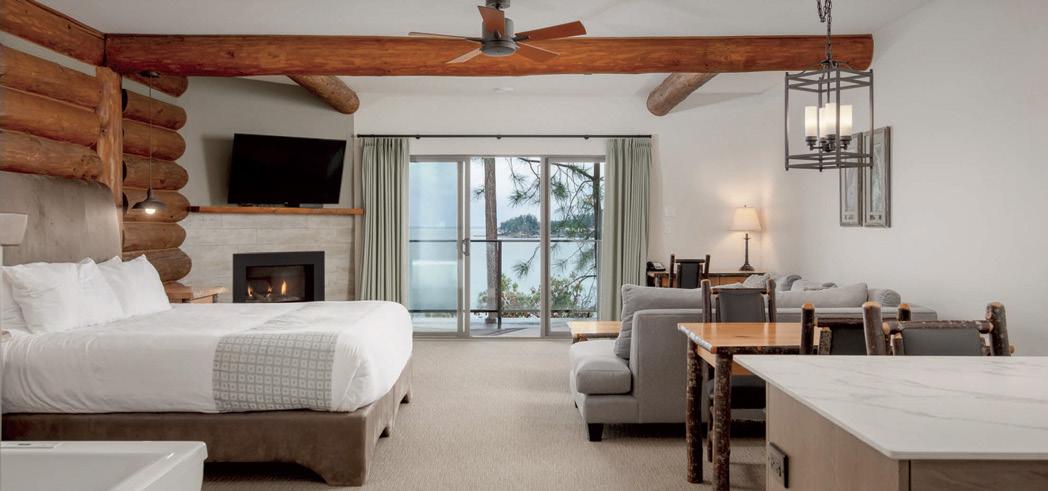






Brain games are a great way to provide mental stimulation, encourage curiosity, develop problem-solving skills and build confidence. They challenge your dog mentally, and are just as exhausting as any physical exercise you do.
As an added bonus, brain games can also help curb behaviour issues that boredom can bring on.
All this by spending a little time with your dog and having some fun!
What better way to help yourself out than to train your dog to do chores! A dog that already knows how to fetch will have an easier time learning this game.
With toys scattered around the room, ask your dog to fetch one. Wait by the toy box and when he returns have a treat over the toy box. When he opens his mouth for the treat, the
toy falls into the box. Mark it by saying “yes” as soon as the toy is dropping and then give your dog a treat. Through repetition and reward, eventually you should be able to give the cue or point to the box and your dog will be more than willing to put his toys away for a tasty treat.
This human guessing game is a great way to introduce a search game to your dogs. Hide a favourite treat in one of your hands and tell your dog to pick a hand. When your dog noses or paws the correct hand, say “yes” and open your hand with the treat to reward the correct choice. If your dog chooses the wrong hand, just encourage them to continue searching and reward extra when they guess correctly. Once your dog gets used to the game, you can increase the difficulty by moving on to the shell game.
This popular sleight-of-hand game can easily be adapted to a fun brain game. Line up three identical objects and hide a treat under one of them. Show your dog where the treat is, shuffle the objects and get your dog to choose the correct object for the reward inside.
You can make this game easier by training the “find it” and “alert” on one object to start. Once they know what they are doing, you can increase the difficulty by adding objects or moving the objects more quickly. Get ready to wow all of your friends.
This is a great activity for small and large areas. It also encourages natural instincts by using their sense of smell to search out the reward.
To begin, use a handful of kibble or small treats and toss them out onto the floor. Ask your dog to search and release them. As your dog becomes familiar with the game, you can increase the search area and make the treats harder to find.
For more difficult search locations, you can make them a “jackpot zone” to make the harder search more rewarding.
There can be multiple variations of this game by increasing the size of the search area, adding obstacles, creating mazes, making the reward less accessible or searching for items rather than treats.
If you play this game often you may want to consider using their regular meal rations as a reward to avoid overfeeding.
is a multimedia designer and desktop publisher by day, and a dog sport and training enthusiast by night. She is the art director and publisher of PAW Quarterly, a magazine dedicated entirely to our best friends, playmates and partners in crime—dogs.
Brain games can also help curb behaviour issues that boredom can bring on.

Garden tourism is on the rise, and more people are discovering the beauty of BC’s gardens each year. One of the most popular benefits of visiting public gardens is the opportunity to learn and grow.
Many of these gardens offer educational tours, workshops and programs that allow visitors to explore and learn about a variety of topics, from plant identification to sustainable gardening practices. Additionally, many of BC’s gardens regularly host family friendly events.
“Spring is a season of rejuvenation and growth, and it’s the perfect time for locals and tourists to connect with nature and experience British Columbia’s affordable
and highly diverse beautiful garden experiences,” says Geoff Ball, president of Gardens BC.
“Whether you're drawn to botanical gardens, cultural gardens, garden centres, nurseries, educational spaces or more, there is literally a garden for everyone to enjoy in this province. Our garden experiences are world-renowned, and we’re excited to be offering seven unique gardencentered travel itineraries for people to follow along with this spring!”
As reported at the 2023 International Garden Tourism Conference by Dr. Richard W. Benfield, gardening is the leading outdoor activity in North America today,
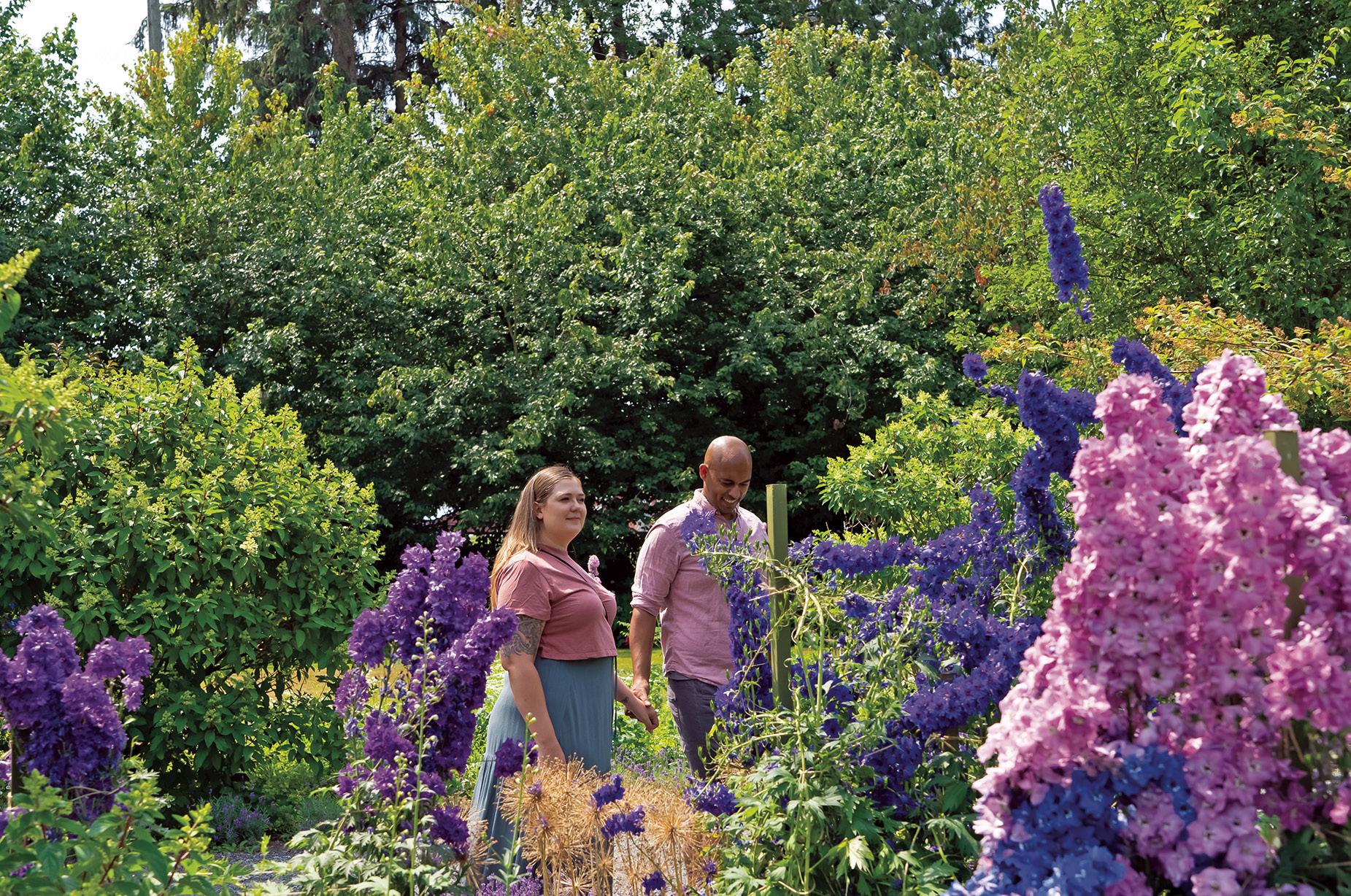
and garden tourism accounts for one of the largest segments of the world’s tourism industry, with 1.5 billion visitors to more than 5,000 gardens annually.
Exploring the gardens offers a chance to unplug, get active and bond together amongst the beauty of nature.
Gardensbc.com makes planning your next garden visit easy. The website offers lists of garden experiences in each destination, as well as suggestions for dining, accommodations and available amenities, such as gardening education, on-site cafés and gift shops, picnic spots, pet-friendly areas and wheelchair-accessible grounds. All itineraries have been developed in collaboration with tourism partners and supported by Destination BC.
Explore garden adventures in:
The Tofino Botanical Gardens has entered a new phase of life. The 10-acre site has transferred ownership to the IPCA Innovation Program—a project of MakeWay. MakeWay is a national charitable organization whose mandate is “nature and communities thriving together.” Much of the vision for the Tofino Botanical Gardens, established in 1997, will be enhanced to include a focus on Indigenous-led conservation.
Enjoy 55 acres of floral show gardens all year around. In spring, countless tulips, daffodils and hyacinths provide an abundance of fragrance. The summer welcomes colourful delphiniums, setting the stage for the rose garden. The perennial borders start their stunning show in late summer, and the Japanese maples turn to russet, gold and red in the autumn. Complete your visit with traditional afternoon tea in The Dining Room Restaurant and a visit to the Seed & Gift Store.
In the climate-controlled environment, you will wander through lush jungles of plants native to tropical rainforest environments. Stroll along the pathways past organic vanilla beans growing on the vine, papaya trees, pineapple, coffee beans, ginger and many other foods of the world

growing in organic soil. As you mingle with tropical animals, you will be pleased to discover that they are all rescued. This carefully planned combination of trees, bushes, vines and creepers is a balanced jungle-like eco-system that flourishes without the use of herbicides and pesticides.
While Hatley Castle is the centrepiece of the estate, there’s much more to the park and National Historic Site: gorgeous Japanese, Italian and rose formal gardens that follow Edwardian design, 15km of walking and hiking trails through old-growth forest, a protected migratory bird sanctuary, an historic First Nations’ site and a spectacular view of the Olympic Mountains across the Juan de Fuca Strait.
With nine acres of demonstration gardens to enjoy, you’ll find plenty of in-
spiration for your own garden. A further 100 acres of conservation park is home to endangered plant species and host to many native bird species. Over 260 volunteers assist in maintaining and growing the gardens and were the first to establish this unique setting. HCP is also home to Pacific Horticulture College, founded in 1987 providing yearlong professional horticulture education.
Vancouver Island University’s Milner Gardens & Woodland is a magical seaside retreat once reserved for royalty. Sheltered by the site’s old-growth forest and the Strait of Georgia, this woodland estate rejuvenates the soul with its gardens and magnificent coa stal views. Stroll along the groomed nature trails through the 60 acres of old-growth forest to the woodland garden with its rhododendron lined glades carpeted with cyclamen, trillium and other indigenous plants.
is a coalition of public gardens working together to promote visiting British Columbia’s diversity of gardens and garden experiences. Learn more at gardensbc.com
In the heart of vibrant communities and bountiful backyards around Vancouver Island, a growing movement has taken root. Edible landscaping, also known as foodscaping, is not just changing how we view our gardens; it’s transforming our lifestyle, health and environment.
Edible landscaping exists where landscaping and the local food movement come together. It’s an approach that combines the visual appeal of traditional ornamental gardening, with the practical benefits of growing your own food. Unlike conventional gardens that mainly prioritize aesthetics, edible landscapes serve a dual purpose: they are both beautiful and bountiful.

On Vancouver Island, where the mild climate is conducive to a wide range of edible and medicinal plants, homeowners are increasingly embracing this approach. Fruit trees provide both blossoms and fruit. Edible flowers, and colourful vegetables like rainbow chard and scarlet runner beans, add interest to the garden and our plates. Fragrant herbs line stepping stone pathways. The appetite for local food continues
to grow, and edible landscaping offers a unique opportunity to feed our families, increase our property value and reconnect with nature all at once.
Food forestry, or forest gardening, takes edible landscaping a step further. This method involves creating layered gardens that mimic the structure and function of natural forests. A food forest typically includes a canopy of fruit and nut trees, a lower layer of berry bushes and an understory of perennial vegetables and herbs.
The beauty of a food forest lies in its ability to create a self-sustaining ecosystem. It encourages biodiversity, improves soil health and provides a habitat for beneficial wildlife. For residents of Vancouver Island, food forestry offers a way to engage with nature and contribute to local ecosystems, all while reaping the harvest.
The benefits of edible landscaping and food forestry extend beyond mere aesthetics and food production. They represent a holistic approach to living that aligns with the values of health, sustainability and community.
Health Benefits: Gardening is a physical activity that can improve fitness, flexibility and strength. It also promotes mental wellbeing by reducing stress and anxiety. The fresh produce from these gardens provides a source of organic, nutrient-rich food, contributing to a healthier diet.
Environmental Benefits: These practices play a crucial role in environmental con-

servation. They support local pollinators, reduce the carbon footprint associated with food transportation and help in soil conservation.
Community and Educational Benefits: Edible landscapes and food forests provide opportunities for community engagement and education. They can become centres for learning about sustainable practices, local food systems and ecology.
Start working with a pencil, not your back! Sketch your ideas before you touch a shovel. Plant culinary herbs close to your doorways and along pathways for easy and frequent harvesting. Build raised beds for vegetables in the sunniest place closest to your kitchen. Plant the tallest fruit and nut trees in the north, and progressively smaller species of berries, shrubs and groundcovers towards the sunny south, to make maximum use of solar energy. Instead of rows, consider branching patterns to maximize planting space. Ensure that all pathways lead towards something beautiful, to catch your attention and lure you in.
Edible landscaping and food forestry offer a sustainable, healthful and fulfilling way to interact with our environment. For the residents of Vancouver Island, it’s more than just a gardening trend; it’s a lifestyle choice that celebrates the connection between land, food and community. As we embrace these practices, we step into a world where our gardens are not just spaces of beauty, but also sources of nourishment and ecological harmony.
and Edible Landscapes Design are a team of passionate professionals serving homeowners, businesses, farms and DIYers to design, install and maintain landscapes that nourish, feed and regenerate.
They’re a gateway to education and at Code Ninjas, a dynamic learning center in Westshore, they’re proving it. Catering to the South Island, Code Ninjas teaches kids age 5 to 14 essential computer coding and problem-solving skills, by immersing them in the world of game development.
At the helm are Sonia and Jesse Bowness, dedicated local parents with a profound appreciation for STEM (Science, Technology, Engineering, Math) education. Drawing from their backgrounds as an educator and a tech industry executive, respectively, the Bowness’ envisioned a haven where learning to code would be as entertaining as it is enriching.
“Code Ninjas epitomizes the fusion of learning and fun, from our immersive coding programs for kids 5 to 14, to our vibrant clubs and social gatherings,” Sonia says. “Our motto isn’t just a catchphrase—it’s a commitment we believe in! Kids have fun, parents see results!”
Every aspect of Code Ninjas fosters excitement that keeps children returning time and again. Since opening, the center has hosted over 40,000 coding sessions, and accumulated hundreds of 5-star reviews from happy parents. Parents love that Code Ninjas programs deliver tangible outcomes, equipping kids with technical skills and problem-solving acumen essential for tomorrow’s careers. With hundreds of Island kids frequenting Code Ninjas monthly, it’s evident they love learning in an environment where gaming is celebrated and STEM reigns supreme.
“What sets Code Ninjas apart is our ability to cater to students of all skill levels, leveling-up their skills and confidence,” Jesse affirmed. “We see their capabilities and confidence soar.”
Code Ninjas has also been honoured by the community, being voted one of the Best Businesses and Best Tech Businesses in 2023, as well as receiving accolades from former School District 62 Trustee, Board Chair and now MLA Ravi Parmar.
Following their comprehensive, game-based curriculum, Code Ninjas offers nine belts of proficiency akin to martial arts. Students progress at their own pace, receiving guidance from Code Senseis (Instructors) as they ascend.
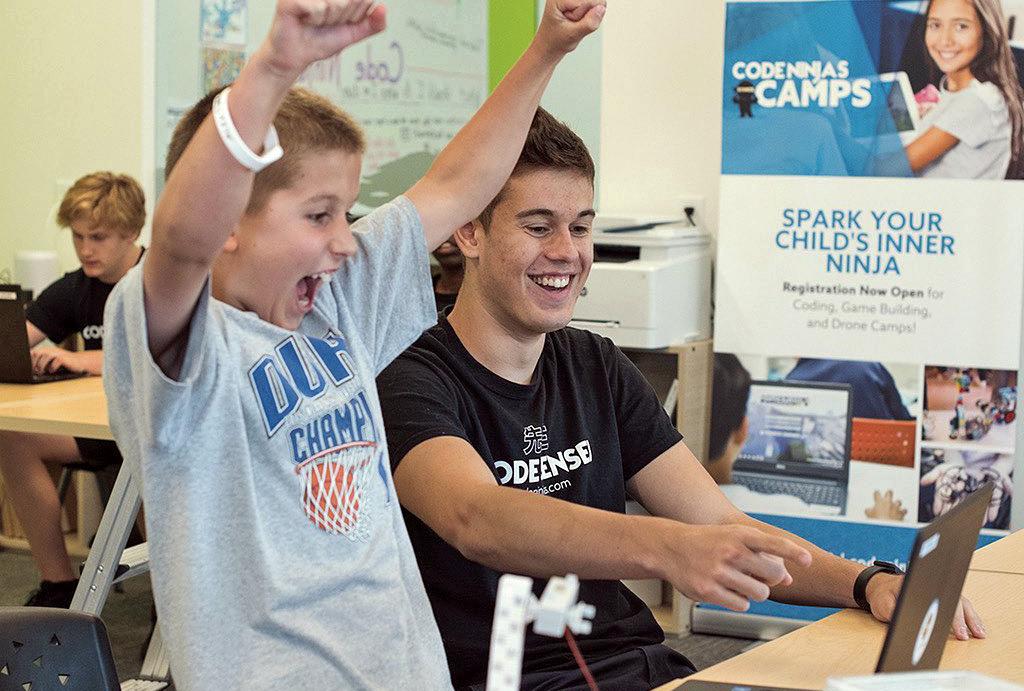

Code Ninjas provides an array of engaging opportunities for kids, spanning education, enrichment and socialization. From the acclaimed CREATE Coding Program to exciting tech camps and parents-night-out events, Roblox and Minecraft Clubs, there’s an engaging learning opportunity for all kids.
My boys find it both stimulating and fun. Code Ninjas has awesome instructors who connect well with the kids, provide a warm and welcoming environment, and serve as mentors to the ninjas.
STRONG RECOMMEND to anyone who wants an exceptional service and experience for your kids that prepares them with 21st-century skills. – Zahra R., PhD(c), M.A. Education
Prospective families can experience Code Ninjas firsthand with a complimentary coding session, via codeninjas.com or by reaching out to Sonia at westshorebcca@codeninjas.com


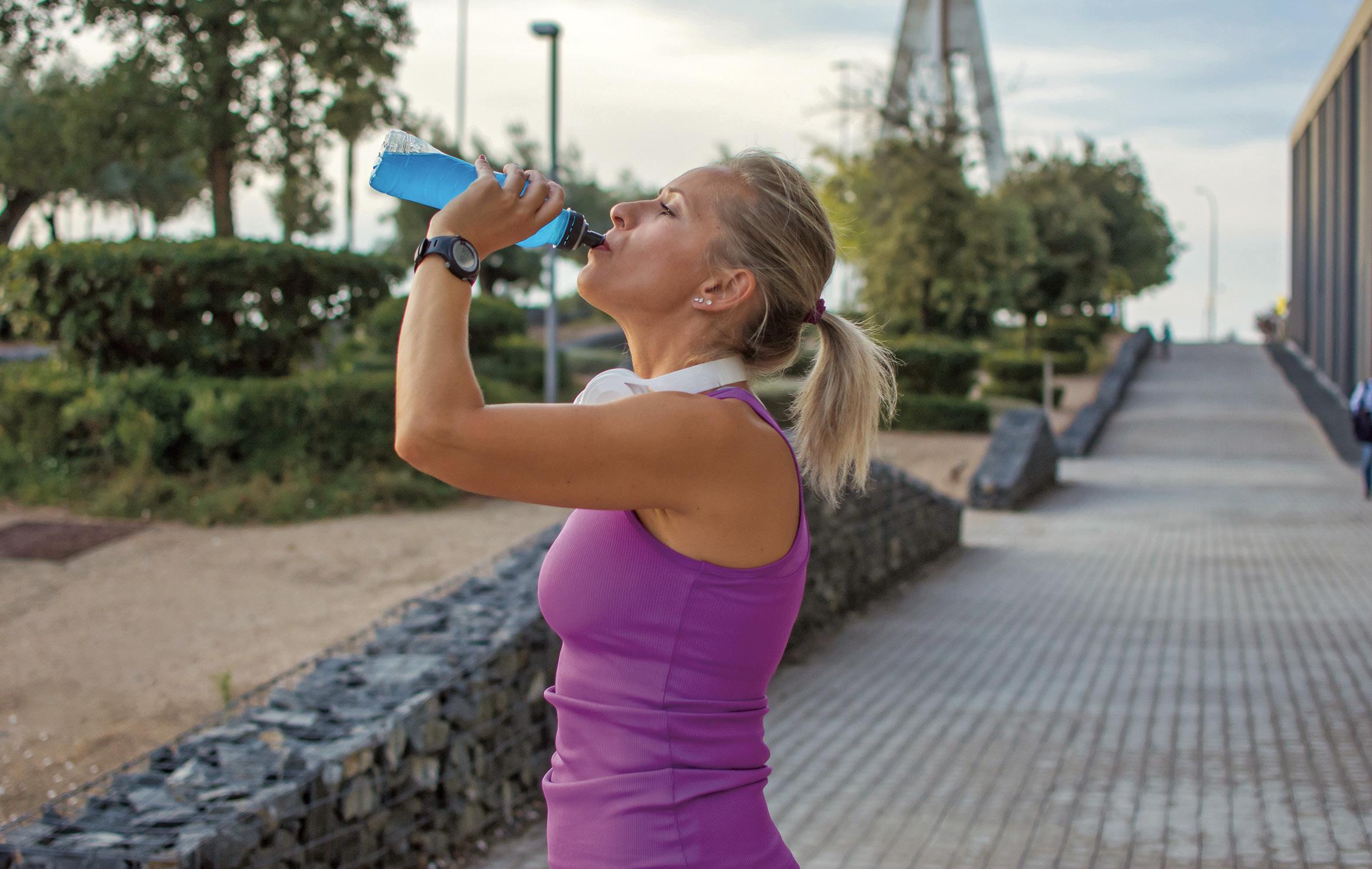
Running offers various benefits including enhanced joint and bone strength, improved circulation, heart health and positive effects on mental well-being.
However, running at any age is hard on your joints and can lead to injury if you are not careful.
A curious mind paired with a growth mindset always discovers avenues for learning and flourishing.
Learning how to start and keep running at 50 (and beyond) can help you safely participate in the sport and get more out of it.
“Overuse injuries from pushing too hard too soon are common,” says Mariah Taylor, RunSport clinic’s head coach and the founder of The Track Club at the Pacific Institute for Sports Education.
“A gradual build-up is crucial. Starting with walk/run intervals, like four to five sets of 60 seconds of running and four minutes of walking, is a smart approach to minimize risks.”
Moving slowly and improving incrementally ensures you are building fitness and strength while minimizing your risk of injury.
“A good warm-up and cool-down routine is paramount,” adds Taylor.
“Starting with an activation routine, fol-
lowed by a gentle warm-up (walk or run), the run/workout and then cool-down and stretching, helps prevent injuries. Paying attention to small details is crucial in running.”
Having a knowledgeable coach can be helpful. A personalized approach is essential as there’s no one-size-fits-all solution. Incorporating strength training gradually introduces loading in a controlled environment, preparing the body for running impact and highlighting imbalances.
Find yourself a guide: a mentor, a coach or a bunch of like-minded individuals. A crew that keeps you inspired and accountable will go a long way.
Taylor coaches a woman in her late 60s who trains alongside women in their 20s and 30s.
“The dynamic within this group is electric, and propels her beyond solo achievements. It’s the secret to preserving that childlike sense of wonder, where the fear of failure was never a consideration,” she says.
“A curious mind paired with a growth mindset always discovers avenues for learning and flourishing.”
“Age doesn't limit setting goals,” says Taylor.
“All you need to do is to ensure they are measurable, realistic and attainable. Incorporate process goals as checkpoints to keep you on track.”
Make sure your goals are appropriate for your age and current fitness level. It may take some time to learn what you are capable of so be flexible and ready to alter goals when needed. Be proud that you are becoming an active and committed runner.
Recovery may differ at this age, so experimenting with strategies is vital.
Chances are, if you used to run, you won’t bounce back as quickly as you did when you were younger.
Listen to your body and don’t run if you don’t feel fully refreshed and excited to do so.
Focus on warm-ups, cool-downs, hydration, post-workout snacks, electrolytes, yoga and quality sleep for effective recovery.
is a non-profit organization, helping build a healthy, active community with a focus on inclusion, physical literacy, active living and developing performance athletes.
Sleep is an important factor in running. Proper sleep allows your heart to rest and your cells and tissues to repair.
Taylor said the most common myth about running after 50 is that it is too dangerous or not safe.
“Forget the myth—it’s not too dangerous, not too hard and damn sure is safe,” says Taylor.
“Our bodies are champs at adapting. They are incredible organisms with unbelievable adaptation abilities. Focus on starting slow and emphasizing consistency and recovery. This is the secret sauce and can lead to surprising achievements at any age.”
Age is a factor in running but it is not a showstopper.
“Keep it consistent, be patient and enjoy the ride,” says Taylor.
“Listen to your body, invest in the process—that's where the real magic happens.”


F a mi l y
C a r e g i v e r s N e e d
S u p p o r t T o o
One in four Canadians are family caregivers, providing unpaid and vital support to their dependents 75% of them are stressed

It’s nice to be heard and understood
Until you’ve gone through this, you don’t have any idea Thank you for your support and resources
From a family caregiver

W h a t d o e s b e i n g a f a m i l y
c a r e g i v e r l o o k l i k e o r m e a n ?
W h a t d o e s b e i n g a f a m i l y
c a r e g i v e r l o o k l i k e o r m e a n ?
Most of us, at some point in our lives, will care for someone living with a disease, disability or frailty due to aging We help with personal care, finances, meals, medication, housework, coordinating medical appointments and so much more We offer emotional support and often give up leisure activities and work as care needs grow. Caregiving takes a toll on our minds, bodies, hearts and wallets
Seeking support and education along the way is an important way to maintain your own health
Most of us, at some point in our lives, will care for someone living with a disease, disability or frailty due to aging We help with personal care, finances, meals, medication, housework, coordinating medical appointments and so much more We offer emotional support and often give up leisure activities and work as care needs grow. Caregiving takes a toll on our minds, bodies, hearts and wallets Seeking support and education along the way is an important way to maintain your own health
W h a t s u p p o r t r e s o u r c e s a r e
W h a t s u p p o r t r e s o u r c e s a r e
a v a i l a b l e t o f a m i l y c a r e g i v e r s ?
a v a i l a b l e t o f a m i l y c a r e g i v e r s ?
Discover FREE caregiver resources and services at www familycaregiversbc ca Access articles, tip sheets, webinars, videos, and more Connect with our community through in-person and virtual support groups You're not alone in your caregiving journey we are here for you!
Call the B.C. Caregiver Support Line
1 - 8 7 7 - 5 2 0 - 3 2 6 7
Monday to Friday 8:30 am - 4:00 pm PT
Family Caregivers of BC is a provincial, not-for-profit organization that proudly and compassionately supports over one million people in British Columbia who provide physical and/or emotional care to a family member, friend, or neighbour

Maybeit starts with dropping by your mom’s house to do her laundry or delivering groceries to your friend. Then, gradually, you find yourself doing more as the person you are caring for needs more support. Or sometimes caregiving is triggered by a major health event or acute diagnosis. In both scenarios, caregiving quickly becomes your primary focus, redirecting all your energy and attention. Life as you know it shifts, and in an instant, caregiving becomes your new normal.
Caregiving doesn’t come with a crystal ball. Caregivers often feel uncertain about the future, and have a lack of information about what’s happening, what’s needed and expected.
Here are a few essential first steps to guide you in understanding and meeting your loved one’s needs effectively:
Obtain a Comprehensive Diagnosis: While it may require extensive coordination with healthcare professionals, obtaining an accurate diagnosis is crucial. Understanding the specific disease or condition your loved one is facing, along with its symptoms and effects, can help guide your caregiving journey.
Identify Necessary Supports: Take the time to assess and determine the supports you’ll need as a caregiver. This may involve seeking informational resources, emotional support or access to publicly funded or private services. Be specific in your assessment, considering the unique needs of your loved one’s situation, such as any mobility issues or communication challenges following a stroke.
Acquire Relevant Skills: Depending on the diagnosis, you may need to develop specific caregiving skills and knowl-
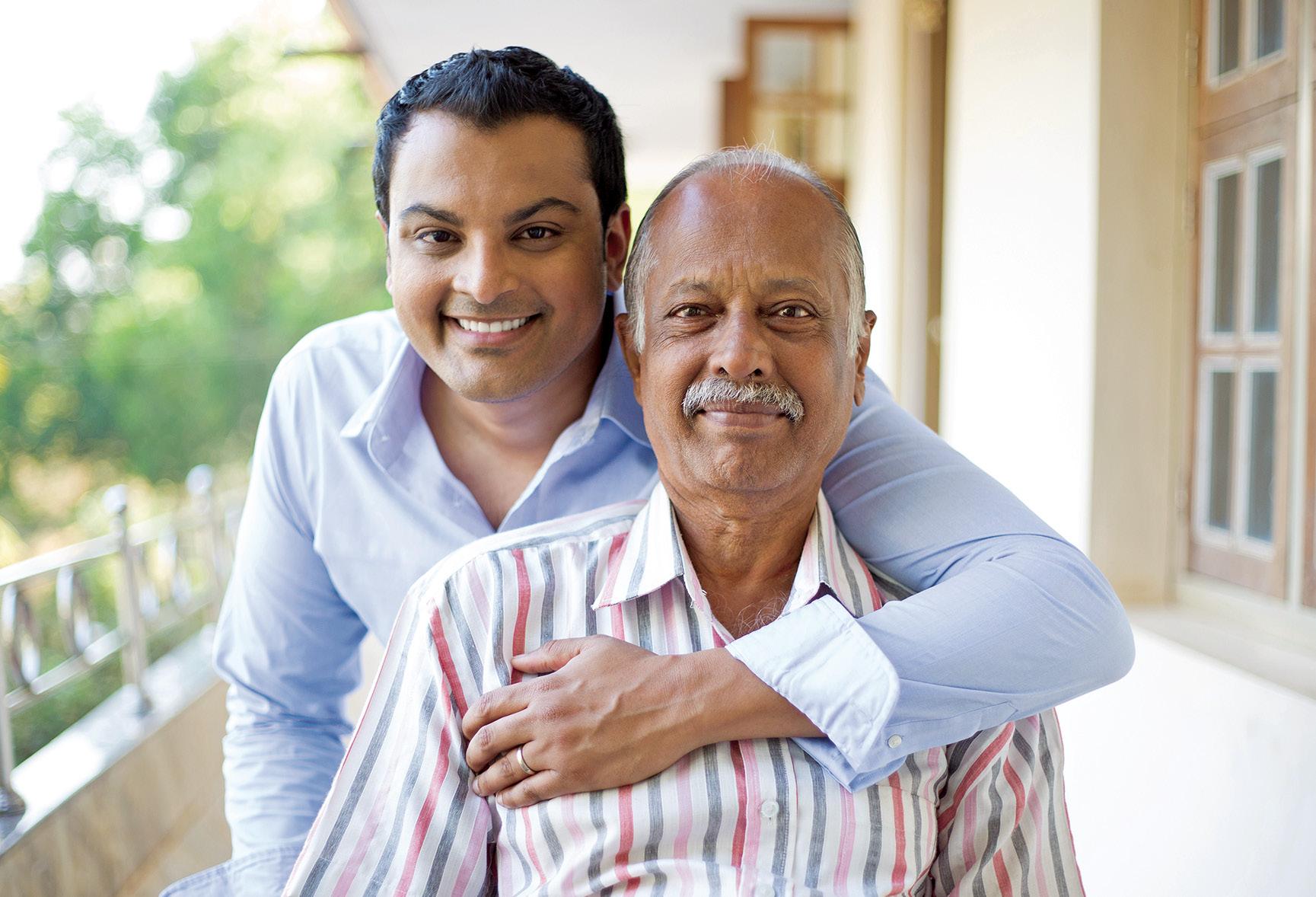

edge. Consult with your healthcare team and seek out disease-specific programs and caregiver support to acquire the necessary training. Whether it’s managing complex medication regimens or assisting with rehabilitation exercises, tailor your learning and preparation to meet the demands of your loved one’s condition.
In addition to these steps, it’s extremely important for new family caregivers to prioritize their own well-being to prevent burnout. Remember to carve out time for self-care activities that rejuvenate your mind and body, whether it’s going for a walk, practicing mindfulness or indulging in a hobby. Joining a caregiver support group or seeking counselling can provide valuable emotional support and practical advice.
Remember, you’re not alone on this journey; seeking support from others and embracing realistic expectations can enhance your resilience amidst the caregiving challenges. With preparation, support and self-care, new caregivers can navigate their roles with strength, empathy and empowered determination.
To learn more, visit the Family Caregivers of BC Caregiver Resource Centre at familycaregiversbc.ca or reach out to the BC Caregiver Support Line at 1-877-520-3267. Increase your resilience, learn new skills and find support.
We are here for you.
If you are a lover of arts, Vancouver Island does not disappoint.
Local galleries feature everything you could want to paint your mind with beautiful images, find your next favourite piece for your collection, build your skills with expert workshops and classes and inspire your imagination.
Check out our top 10 hot spots to get your creative juices flowing.
Victoria Arts Council
vicartscouncil.ca | various locations
Victoria Arts Council supports artists at all levels of their engagement and provides opportunities for artists and audiences to connect through exhibitions, performances, readings, publications and educational programmes.

Gage Gallery
gagegallery.ca | 19 Bastion Sq
Gage Gallery is 22 local contemporary artists dedicated to exhibiting and selling their artwork in an inspiring venue located in downtown Victoria. Solo and group exhibitions rotate throughout the main gallery every three weeks.
The Arts Centre at Cedar Hill
saanich.ca | 3220 Cedar Hill Rd
If you’re looking for a creative community hub, the Arts Centre at Cedar Hill Recreation Centre in Victoria is the place. Offering accessible arts for all ages and abilities, these programs help foster connections and skill building.
cowichanvalleyartscouncil.ca | 2687 James St
Since 1971, the Cowichan Valley Arts Council has been a space for adults and youth to learn and participate. They present and promote primarily Vancouver Island artists in more than 25 shows every year at their downtown Duncan location.
ladysmitharts.ca | 32 High St
The Arts Council of Ladysmith & District brings together artists and art lovers of all mediums to provide opportunities and experiences to the community. The monthly exhibits in their Ladysmith location showcase Vancouver Island artists.
pearlellisgallery.com | 1729A Comox Ave
Showcasing local artists, the Pearl Ellis Art Gallery is a non-profit gallery located in Comox. Starting as a one-room gallery in 1977, the gallery has grown and thrived over the years, thanks to its many valuable volunteers. Purchase a gift, apply to add your own piece or simply stop by to view some amazing local art.
royhenryvickers.com | 350 Campbell St
This artist-owned gallery is a recognizable landmark in Tofino. Visit the stunning Northwest Coast longhouse to view Roy’s original paintings, prints, art cards and reproductions hanging among the totems and carvings. Roy himself story tells in the gallery on occasion so be sure to check the calendar of events.
oceansideartgallery.ca | 152 Second Ave W
The Oceanside Art Gallery is proud to
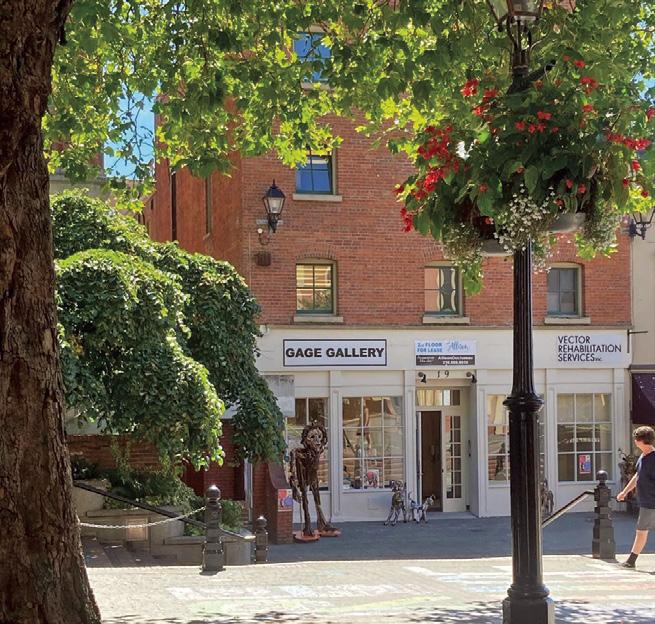

represent artists from all over Canada. Located in scenic Qualicum Beach, this modern boutique gallery features incredible paintings and sculpture created by Canada’s finest artists.
nanaimoartgallery.ca | 150 Commercial St
The Nanaimo Art Gallery is in the heart of downtown Nanaimo and is committed to offering valuable, accessible programing to all ages in surrounding communities. They strive to build connections and effect changes through their creative hub.
aquamarisartgallery.com | 202–330 Duncan St
Established in 2019, the Aquamaris Art Gallery in Duncan focuses on showcasing some of the region’s most talented artists. Featuring contemporary modern art, this gallery promotes pieces that provides diverse expressions through a variety of subject matters.
enjoys photography and appreciates the diverse talents of many local artists through visiting shows and galleries on the Island.
 Volunteers
Volunteers
Volunteer Victoria is the only volunteer centre that serves people of all ages, organizations of all sizes and groups of all kinds. The organization helps in all the municipalities across Greater Victoria. Our mission is to inspire volunteers and empower volunteerism—which basically means when volunteers are needed, we are here to help.
Thanks to a grant from the Government of Canada New Horizons for Seniors Program, we have been talking to people about their volunteering journeys, and learning more about how volunteerism adds value to their lives and to the community.
In 2024, our 50th year of service, Volunteer Victoria is celebrating volunteers and volunteerism. We are pleased to share the following volunteering stories from our collection.
You can listen to more stories about volunteering and community building on the Volunteering Matters Podcast or you can read our Volunteer Matters Magazine on our website at volunteervictoria.bc.ca


Ihave been a volunteer mentor with Big Brothers Big Sisters of Victoria Capital Region for the past eight years. Through spending time together each week, myself and my young mentee have built a consistent, caring and supportive friendship.
After I retired, I felt lucky to have some extra time. I decided to use a bit of time for a good purpose. My father died when I was barely 16, and I thought I might help a boy whose father wasn’t around.
When I started volunteering with the In-School Mentoring program, I was matched with a Grade 3 student who needed a positive male role model in his life.
When I applied, the mentoring coordinator asked me several questions about what kind of child I might relate to—and I think she made an excellent match.
We spent an hour together at school each week— reading books, playing board games, shooting baskets and just spending quality time with each other.
Now almost a decade later, the two of us still spend time together almost every Saturday.
We have since moved over to the Community Mentoring program, where mentoring matches visit in the community rather than at school. Mentees can formally
participate in the program until they turn 18, and many matches continue into a lifelong connection.
It’s been gratifying to watch my mentee grow and become a fine teenager. He is open and honest, he is friendly and thoughtful and he has a sunny disposition.
In short, he’s a really nice kid—I regularly tell him that I’m impressed.
Between fun activities like hikes, sports games and movies, we also do homework together and have recently talked about possible careers.
Through mentoring, I’ve learned that kids are like sponges. They soak up information, they soak up attitudes and they will strive to meet reasonable expectations that are set for them.
Every adult has something valuable to offer a child— skills, knowledge and attitudes that children can learn from. Sometimes it’s just your presence that tells a kid, “Hey, you’re worth spending time with.”
If you have the time—just a few hours each week—I encourage you to give mentoring a try.
You never know who a young person could become because of you.
Visit bbbsvictoria.com to learn more.
“I
don’t want this story to be about me,” June said. “I want it to be about volunteers and the organizations in the community that mean and do so much.”

As a formidable octogenarian with a bright smile, a big heart and a twinkle in her eyes, it is clear that June still means what she says.
June was the first social worker hired at what was then called the Queen Alexandra Hospital for Children. Surrounded by medical professionals who had their own ways of working, June realized that as a team of one, she needed to acknowledge the existing systems and find new ways to better serve the children and families she met at the hospital.
It is not easy to solve big problems, but June always found ways to make things better. In fact, talking to others and inviting them to help build a vision has always been June’s secret ingredient when baking up community projects.
June fondly remembers the mid-1970s when a small group of friends, colleagues and neighbours realized that they could help seniors living in Oak Bay. By 1977, Oak Bay Volunteers was an official entity, and is still working today to help with everyday tasks and to offer friendship and support to seniors.
One person cannot eradicate loneliness for every senior living in a community, but a team of volunteers with a shared vision can serve thousands of seniors for decades. It just
took a small group of people to get the ball rolling and new volunteers to keep up the momentum. Each generation of volunteers leads the way, and then steps back to allow others to step up.
June’s community activism did not begin and end with Oak Bay Volunteers. This is just one example in decades of volunteerism. June was a board member with Family Services of Greater Victoria, she is a lifelong member of the BC Law Society (as the only social worker on the team), and is currently involved in a new, much more personal project.
A close family member has been served by the wonderful team at Island Deaf and Hard of Hearing for years, but now requires more support for vision loss. To June’s surprise, British Columbia did not have an established deaf and blind advocacy organization. June decided that she needed more information and would look within and beyond the doors of the hospital to find it.
So, if you meet June this year and she is talking about the need for more services for people who are deaf and blind, she is not only talking about people she cares about. She is spreading the word, making connections, looking for people who can help and helping to build a team that can change the world for a group of people who need our support. After all, this story is not about June. It is about people.
When driving through James Bay or visiting Fisherman’s Wharf, you may have noticed a garden edged with lavender at the Erie and St. Lawrence corner of Fisherman’s Wharf Park. This community herb garden was part of the original design for the park 15 years ago, with symmetrical paths, and trees, shrubs and herbs.
During the pandemic, the day-to-day responsibility for the garden moved from the City Parks Department to the James Bay Neighbourhood Association (JBNA). Since then, a group of volunteers meets once a week to weed, prune, plant, water, pick up garbage and check for pests, all under the skilled guidance of the JBNA Gardening Coordinator. The change in the garden over three years is wonderful to see as more kinds of herbs and edible flowers are introduced, the soil improves, and more birds and other pollinators discover the garden.
I am one of those volunteers and the time I spend in the herb garden is gratifying in so many ways. I get to meet other volunteers, chat with neighbours and tourists, and learn more about gardening. I see the garden grow and change through the seasons and years. I love gardening. It is such a peaceful and productive activity–and it’s time spent outdoors. Being able to volunteer in a garden brings together my love of gardening and my desire to contribute
to my community—plus it’s fun and rewarding. A perfect fit!
As food security becomes a more serious concern, it makes sense to have community gardens within easy distance of where we live and work. At the Fisherman’s Wharf Park Community Herb Garden, visitors are encouraged to try berries and herbs. Light grazing ensures that there will be enough for all, although sometimes it seems we can never have enough chives! It’s always a delight to see someone picking what is needed for dinner—perhaps a sprig of rosemary or some mint.
There are 32 community gardens in James Bay and in other City of Victoria neighbourhoods. Our volunteers contribute in different ways, from weekly gardening, helping with events like plant swaps and the Get Growing days, collecting and sorting seeds, and looking after neighbourhood fruit trees planted by the City. The same volunteers don’t necessarily come every week and if wet or cold weather is a deterrent, that’s no problem. Tasks can be low- or high-energy, and there are always a variety of things to do whether the volunteer is a beginner or experienced gardener. The shared feeling of accomplishment when a new plant takes off or a pruning job has been done is always satisfying.
Learn more at jbna.org

My volunteer experience in India while serving people in poverty has led me to the desire of serving my community here in Victoria. I believe volunteering is the opportunity to give and help create community, especially for people living in difficult circumstances. I want these people to know that they are seen and cared for. I love celebrating peoples’ courage, resilience and success.
I was looking for another volunteer opportunity after the lockdowns and came across the Cridge Transition House in a Times-Colonist ad looking for volunteers. This ad jumped out at me, and I knew right then that this was the place I wanted to volunteer. I have worked with children previously in other capacities. For as long as I can remember, I had compassion for women and children living in difficult situations. My time in India included working with teams to support children living in extreme poverty.
I have many memorable experiences that keep me motivated to volunteer like the delight and joyful smiles when the children see me come through the door. I was doing crafts with a sister and brother and one looked up at me and said, “I know what, you are our grandma.” Another time I was working with two non-verbal young siblings and upon greeting them, one of them responded to me with a clear spoken, “hi.” This was the first spoken word by this young child. One more experience that really touched me was when a little girl, who had only met me once before, saw me and her eyes lit up. She said, “You’re here again” then ran into my arms.

For me, it’s all about the connection, it’s seeing the hope return to women and children. I see it in their eyes and their confidence seems to return within their new and safe environment. I also enjoy working closely with the staff who are incredible and supportive of the volunteers.
If I could offer some advice to volunteers, first choose something you love and have passion for.
My recommendation is to evaluate the skills and experiences you have developed over the years. Using your time wisely and putting it to good use will benefit both yourself and the organization. You are there to serve both the organizational needs and work well with staff and other volunteers.
Giving to those who cannot give back is very freeing. It takes the focus off our own needs and puts it on others. Enjoy fun and laughter as part of a team. Volunteering can provide a real community and sense of belonging and in the process good friends are made.
Learn more about volunteering at Cridge at cridge.org

I’ve been volunteering since I was a kid. I have volunteered in all sorts of ways, depending on what’s going on in my community and what time and skills I have to offer. For example, I’ve volunteered at community events (like taking tickets and doing crafts with kids for a theatre series) and I’ve volunteered to chair the board of an organization.
Being the Board Chair for the LifeCycles Project Society was rewarding for me because I started my career with a similar organization in Vancouver. I wanted to be a part of the food system, and ecological and social justice work in Victoria. One of my favourite things to do is cook so I also like providing food for community events and cooking for neighbours when they need some TLC.
In my day job, I run a community-engaged learning program at a local university. In this work, I connect students with all sorts of community initiatives and organizations. I find it so rewarding to support students in making connections between their studies and their community, and I am constantly inspired by the many community initiatives supported and led by phenomenal volunteers.
For me, volunteering creates a sense of belonging in the community. There are so many ways to volunteer; you can choose the activity and level of commitment that work for you and the folks you’re volunteering with.
Learn more at lifecyclesproject.ca
As newcomers to Victoria, Peter and Hilary were shocked by the visible homelessness. Motivated to contribute meaningfully, they began their journey by sponsoring meals. However, the couple soon realized that caring wasn’t just about providing financial support; it was about investing time and building connections.
“Writing the cheque is relatively easy,” says Peter. “And we’d heard it said that, ‘what was really valuable was time more than money.’ So, we thought, ‘Well, we’d better do some of that as well.’”
Guided by a desire to make a tangible impact, Peter and Hilary found their niche in the Saturday morning breakfast shifts at Our Place Society, an organization serving people who are unhoused. The couple, now into their second year of volunteering, modestly downplays the notion of celebrating their volunteering anniversaries, preferring to emphasize their ongoing commitment to the cause.
When asked about their specific choice of Our Place Society, Peter and Hilary reveal that it was driven by the stark reality they witnessed on Pandora Street. Their decision was guided by a sense of serendipity and a desire to address the needs of those most visibly affected by homelessness. “We were looking to do something and didn’t know where. And in a sense, it was serendipity that had us choose Our Place.”
A key aspect of their volunteering journey has been their shift in perspectives. Peter openly admits to having preconceived notions about homelessness and acknowledges a profound change in understanding since they began volunteering. The couple encourages others to witness the reality firsthand.
“If there’s a message, I guess, we would want folks to understand the multifaceted contributors to homelessness, including issues of mental health, addiction and unforeseen economic hardships,” he adds.
Through their humble yet impactful efforts, Peter and Hilary remind us that change begins with acknowledging the humanity in every individual, regardless of their circumstances.
Peter and Hilary’s commitment to community service extends beyond Our Place Society. They share their extensive history of volunteering, emphasizing the importance of giving back and staying engaged in the community. Their experiences with family services, senior centres and thrift shops showcase a lifelong dedication to making a positive impact.
Learn more at ourplacesociety.com

My husband is the real connector on our street. Every time he sees somebody, he says, “Hey neighbor, how are you doing?” When he comes home, he often sits on our front step and neighbours will walk by and then come for a chat. And before you know it, they’re being offered a refreshment and then staying for dinner.
He cultivates those connections because of who he is, but decades ago this type of connection was just called being a good neighbour. You lived on a street and people knew each other and would help each other.
But today, lots of people, including myself, get home and head to the back deck because we want some quiet time. There are lots of neighbours who are unable to connect for other reasons—either they’re too shy or stressed, they may have language barriers or mobility challenges or mental health challenges.
The foundation of my work with Building Resilient Neighbourhoods (BRN) is the idea that if we can strengthen connection between neighbours, either at a street level or within buildings, then neighbours will become a mutual support for each other. We encourage a sense of agency and help citizens take charge of things and be instrumental in improving the quality of life for themselves and their neigh-

bours. Everybody needs help sometimes, and everybody can also be a helper and contribute in a variety of ways at different times in their life.
People tell us all the time “I’ve lived on the same street for 15 years. And I’ll say ‘hi,’ I’ll wave, and I’ll say ‘good morning’ to my neighbour but we’ve never actually had a conversation. And, until we made an effort to talk to each other, we had no idea we had so much in common.”
By connecting and exploring commonalities, suddenly a street or a building comes alive, and neighbours are hosting picnics, building a shared chicken coop and they’ve got all kinds of other initiatives that they’re working on together to improve life on their street. One could suggest that neighbours who know each other build more resilient neighbourhoods.
Now, BRN is focused on Connect and Prepare, which is very specific to helping groups of neighbours prepare for emergencies. Neighbours who already have a relationship are much better equipped to respond to real-time emergencies because the relationship’s already there and they know a little bit about each other. So, you’ll know if there’s a person on your street who has mobility issues, and that they are going to trust you when you knock on their door to offer help.
The next time you see your neighbour and offer a smile, a wave, or a hello, why not take the next step? Be like my husband, ask your neighbour how they are doing and talk to them about their favourite music, food, garden, restaurant or anything else that comes to mind. Who knows, you may find that the best place in your whole neighbourhood is at your front door.
Learn more at resilientneighbourhoods.ca

For many years, I volunteered at the Royal BC Museum in the Learning Department and with Special Events. Sometimes that work was very logistical–moving tables, setting up supplies, directing people to where the action was happening. Sometimes that work was very relational.
Memorably, I was part of staging a fortune telling station around Halloween and doing visual recording of queer history during a Pride event.
After a break due to the pandemic, I re-engaged my volunteer roles and I was reminded what I enjoy about encounters with visitors from different backgrounds and experiences.
This month, I was in Helmcken House, one of the oldest settlers’ homes in BC still in its original location, that was decorated for winter festivities. It was delightful to remind visitors that the museum team used photographs from the house itself in 1905 so the decorations and food were “pretty close” to what the family would have enjoyed in that time.
Many people came to the house as part of a visit from outside of the region, and we spoke about local history. Others were well versed on both Fort Victoria and early city history and had many very specific questions about house building supplies or neighbourhood design.
A conversation I enjoyed the most was one where the visitor left saying, “Well you really left me with a lot of questions.” Perhaps people expect volunteers at a museum to have all the answers—but it is wonderful to know that the visitors leave with memories, ideas and reflections that will keep them curious and learning long after their visit to the museum has ended.
I embrace the idea that informal relationships are part of what makes life interesting, and that deep learning happens when we leave a place with more questions than answers.
Learn more at royalbcmuseum.bc.ca
Ido not watch a lot of hockey. I once wanted to play hockey, but I never got further than adult power-skating lessons. I am not your typical hockey fan, yet I found myself on a leadership team hosting a fantastic event called Scotiabank Hockey Day in Canada (January 17 to 20, 2024).
In February 2023, I learned that a group of people were lobbying to bring this national event to Victoria, and I thought I could step outside of my comfort zone and help. I currently sit as the board treasurer for a non-profit organization, and while I wasn’t looking for another large volunteering commitment, I knew that I could fit a special event into my busy schedule. Now, I’m absolutely delighted to be the treasurer for Victoria Hockey Legacy Society, the local organizing committee who brought Scotiabank Hockey Day in Canada to Victoria.
As you might expect, a treasurer spends time working with budgets and overseeing accounting, but because of this volunteering opportunity I also visited with the Stanley Cup, met fantastic sports stars and celebrities and got to stand on the ice and drop the puck at a WHL hockey game. None of these things were expected, but each new adventure has opened the doors to new people, experiences and memories.
I am not going to change my day job at IG Wealth Management for a career in hockey, but I can more than hold my own with the sports fans in my family and I am so proud to have been part of something that brought joy and happiness to people on such a large scale. I never thought I’d be on a hockey team, yet here I am, treasurer of Victoria Hockey Legacy Society.
Learn more at victoriahockeyday.ca

Ihave been volunteering for 67 years, around the world, and primarily in the health sector and with national co-op bodies. I have helped to develop and host volunteer programs and provide training for volunteers in health co-ops, small farming co-ops and have served as a board member on many occasions. I currently sit on the board of the Serenity Housing Co-op.
Serenity Housing is a “collection of Queer folk and allies who want to live interdependently in an equitable eco-friendly manner, where we all have value.” Our mission is to provide and maintain an inclusive, sustainable and affordable tiny-home housing co-operative. Building affordable housing is not an easy task, yet, by working together, I know that we can create new housing options that meet people’s needs and vision.
Through my own volunteering experiences with the Mongolian Co-op sector, I met some of the world’s best co-operators. They grasped and embraced every aspect of volunteer development and community building. I also made great friends and built wonderful memories, like when I amused my colleagues by sliding ignominiously off the back of a fun-loving yak.
If I could share one tip for people entering the workforce or changing careers or their home city, it is that volunteering is an ideal way to gain experience, knowledge and empathy. And there is immense satisfaction in volunteering, having fun, and building necessary, helpful, connections.
Learn more at serenityhousingcoop.ca


Iworked in the non-profit sector for many years, primarily in reception and administration support. In this role, I have met many generous, giving people. One person stands out for me.
For years, our office was located just outside of downtown Victoria and many of our regular donors would walk to our office and make their yearly donations. I was able to get to know people and develop long-lasting connections.
Early on in my work, a young woman came to the office. Her appearance was disheveled, and she looked as if she needed assistance. To my surprise, she held out a hand with a few coins in it. She did not say anything, as she was very shy, but she was making a donation. I tried to engage with her by asking her name. She did not say a word.
The visits became a regular occurrence. Each time, I would greet her and eventually she told me her name. I would ask her how she was doing and occasionally she would answer, but most times she would say nothing. She would come into the office about once a month or so—in the rain, in the cold, in the scorching heat. It didn’t matter what the weather was like.
After many visits, she eventually asked me my name, and from here she became more comfortable talking to me. She would even ask for me if I was not at the front desk. I learned that she lived in supportive housing and had no job or income. Every month, she would come with a few coins to donate and we would keep a tally recording all of her donations throughout the year.
After several years, our office moved locations and I didn’t see this person for quite some time. Finally, she started coming into the office again but now her donations were $5 and sometimes even $10. She was so very proud to share that she was doing some cleaning work where she lived. Eventually she had a casual job cleaning and her donations increased to $20. It might not seem like a lot of money, but $20 was a fortune to this person and represented so much strength and courage.
What I learned from this wonderful woman is that it does not matter who you are or what you have. You may not always have the words or the confidence to speak loudly, but you can always find a way to give, to be kind and to be grateful.
Stella, a senior member of the Soroptimist International of Victoria Westshore Club, asked that we create a series of dinner events for isolated seniors such as herself. In her name, we created Stella’s Supper, a volunteer-run service project helping to alleviate loneliness in vulnerable seniors. I think we enjoy it as much as they do!
Through Stella’s Supper we bring together 36 to 42 seniors at a time and seat them with others who quickly become friends. A few times a year, we serve them a meal and entertain them. Our guest list is currently around 80 people, so RSVPs are required. We mail out printed invitations and have a volunteer to answer their phone calls. Often the volunteer who answered the RSVP has enjoyed several conversations with the guest prior to the event.
It was difficult to keep this going through the pandemic. Once, we held it outdoors in a local park with rented tables for two, as required, checkerboard tablecloths and picnic box lunches. The guests quickly required the tables to be pushed together so they could mingle. We didn’t want to deny octogenarians the chance to see friends and make new connections.
After the world returned to some normalcy, we invited the seniors to come for a meal, friendships and entertainment in a rented hall. I was lucky enough to be on the registration table at that first event after the pandemic and was overcome with emotion as one sweet senior after another grasped my hand, teary eyed, to thank us for inviting them again. The loneliness was terrible for these vulnerable folks, living alone during the pandemic. Sadly, we lost several of our cherished guests during the pandemic.
We have resumed with two or three events a year, entirely run by volunteers. We’ve found that we can cook meals ourselves for the group and our hard-

working volunteers. We have now expanded to deliver meals to those who cannot attend. We pick up guests who need a ride and deliver them safely home after the meal. We plan, cook, clean, serve, mingle, laugh and enjoy sweet exchanges with the many seniors we’ve gotten to know. We have live music, and sometimes they dance. Sometimes we dance too.
We strive to make their lives a little richer through the friendships we help make happen and we have a wonderful time while we do it.
Learn more at soroptimistinternational.org
The Cyber Seniors program, started in Toronto in 2009 by two high school students, is an intergenerational program pairing high school students with seniors to help navigate the ever-changing world of technology. The Cridge Village Seniors Centre is happy to open its doors again to various high school students with this program that was put on hiatus during the pandemic. It has been ever-present in our senior’s facility the last several years of just how valuable intergenerational connections are and how important social media can be in keeping people connected in such uncertain times.

High school students from various schools (Pacific Christian, St. Michaels, Victoria High School) have travelled after school, once a week, to The Cridge Village Seniors Centre to give lessons to our seniors. It has been remarkable to witness the natural gifts of each generation coming together in this mutually beneficial program. Many of our seniors are in their 80s and 90s and students are therefore exposed to a generation’s life history, experiences and customs.
Students aim to help their seniors navigate the fast-paced world of the internet. They are here to help support and build confidence in an online world that was not designed for individuals with sight, hearing or dexterity impairments. For many, learning how to upload pictures to their iCloud is a daunting task. It is more important than ever these days for our seniors to stay connected with their families, many of whom live in other countries or provinces. Learning how to connect with a long-lost family member via Facebook can be life changing.
During the school year, these students have filled our centre with laughter, perspective and collaboration. Students have enjoyed getting to know the senior they are paired up with and have, in certain circumstances, stayed in touch after they have moved on from the program. It has been a pleasure to re-introduce this program that has facilitated connections, friendships, and knowledge back into the lives of our Seniors at The Cridge Centre.
Learn more at cridge.org
My relationship with Together Against Poverty Society (TAPS) began shortly after I retired from my job as a fundraiser for a non-profit agency in Victoria.
I got involved in the Volunteer Disability Advocacy Project (VDAP). VDAP advocates work one-on-one with clients applying for Persons with Disabilities (PWD) designation status through the BC Ministry of Social Development and Poverty Reduction. Attaining this designation leads to an increase in the client’s monthly benefits. The role of the advocate is to draft aspects of the application, help liaise with health practitioners and review the completed application prior to submission.
The training program was comprehensive and ongoing, but I learned most by meeting clients, hearing their stories and getting advice and feedback from the staff member in charge of the project. Feeling well-supported is absolutely critical to a positive volunteer experience.
While not every application for PWD was successful, most were and they led to an increase in

income of several hundred dollars a month for the client. Life on benefits is very hard, involving daily decisions about how to make a little money go a long way. For a successful client, the first payday at the higher rate, plus the back pay, felt akin to winning the lottery!
After a couple of years as a VDAP advocate, I joined the board of TAPS. Along with another board member, I organized an annual fundraising event, which was widely supported by the local business community. This popular event brought together friends of TAPS, both new and old, committed to the goals of the organization to address the systemic causes of poverty and to assist individuals experiencing its consequences. In 2020, the pandemic put an end to that yearly celebration. In spite of the havoc of the COVID-19 years, TAPS continues to thrive with a new generation of volunteers supporting the work of their marvelous professional staff.
Based on my fulfilling experience at TAPS, I recommend being open to the wonderful possibilities that volunteering has to offer.
Learn more at tapsbc.ca
Iam part of a group of seniors called the Wisdom Circle. We formed as a group several years ago after we participated together in sessions offered by Sage-ing International. Over time, we shifted to a more informal format where the members of the group meet monthly for a couple of hours and rotate choosing and leading the topic of our meetings.
During the pandemic, we switched to meeting via Zoom as it was extremely valuable to continue to connect monthly during that stressful time. Due to concerns about staying well and mobility issues, we have committed to continue to meet monthly with a couple of in-person gatherings each year.
Being able to offer to be the Zoom host for our monthly group has turned out to be very valuable. As a group, it means that we can continue to offer each other fellowship and support. As an individual, I have challenged myself to stay up-to-date with the technology necessary to be a Zoom host.
Being part of such a nurturing and stimulating group of senior women is wonderful. Being able to share together, learn together and laugh together is truly special. I am pleased that challenging myself to learn to use Zoom has helped this group continue to meet and flourish.


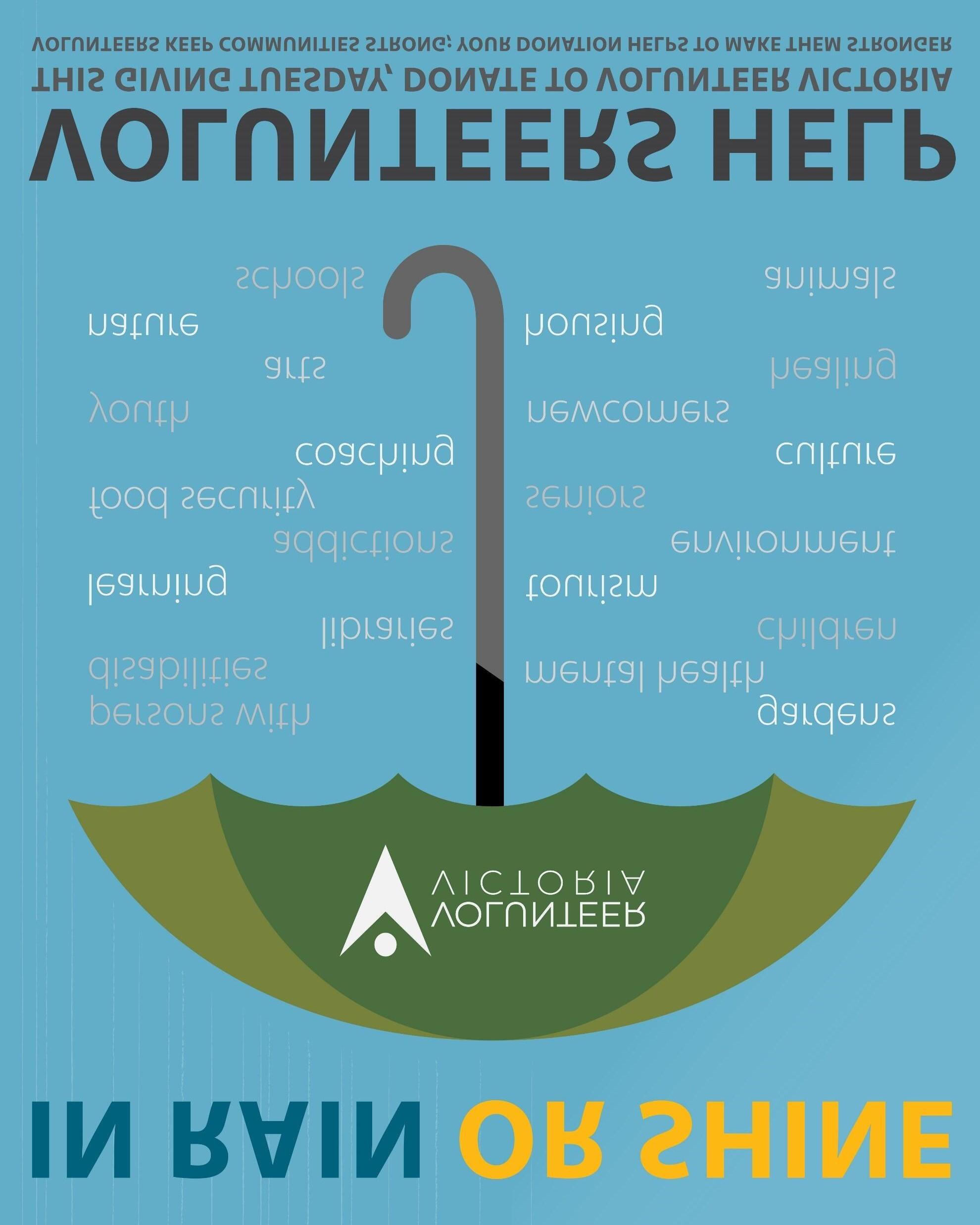










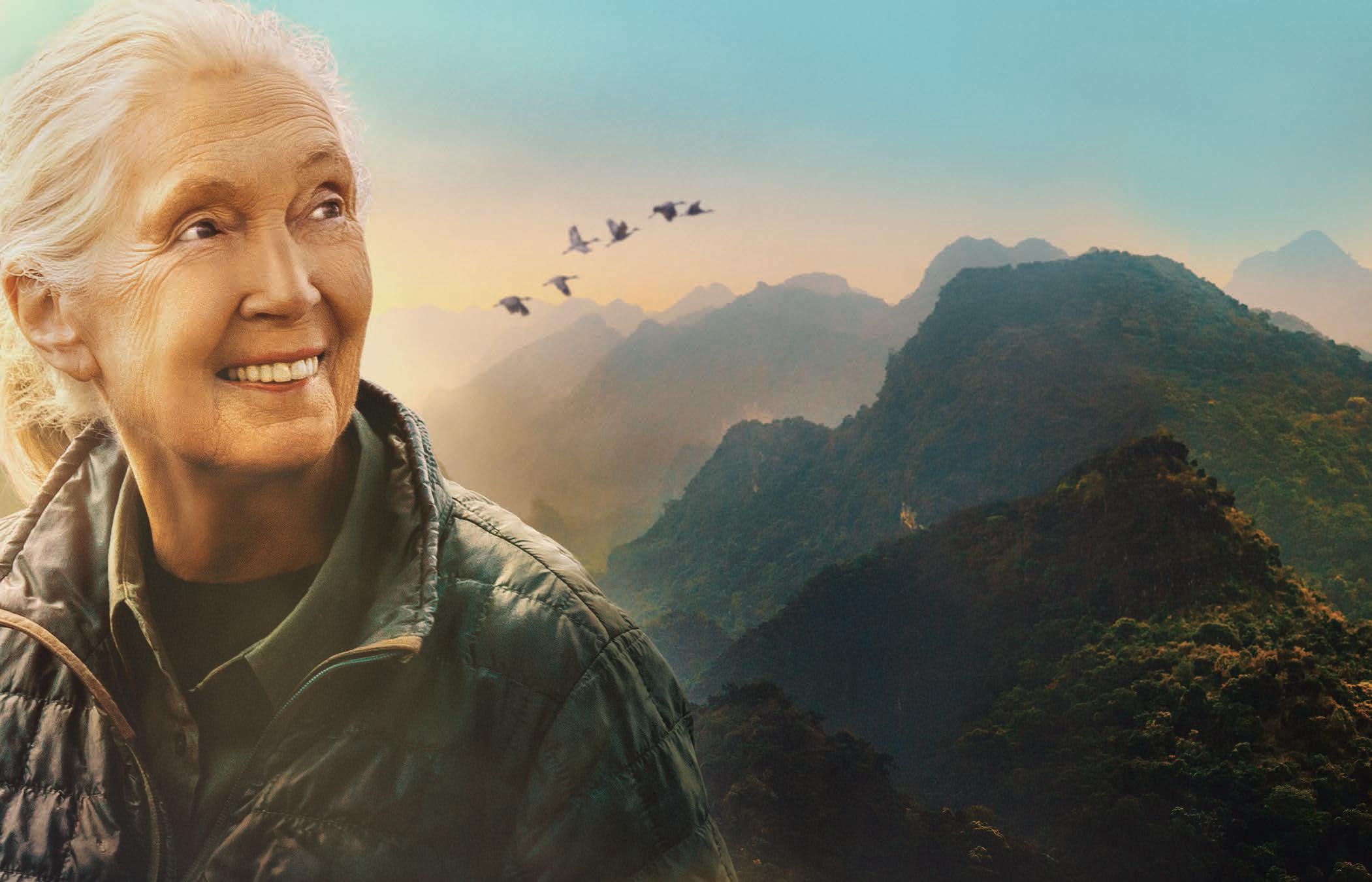


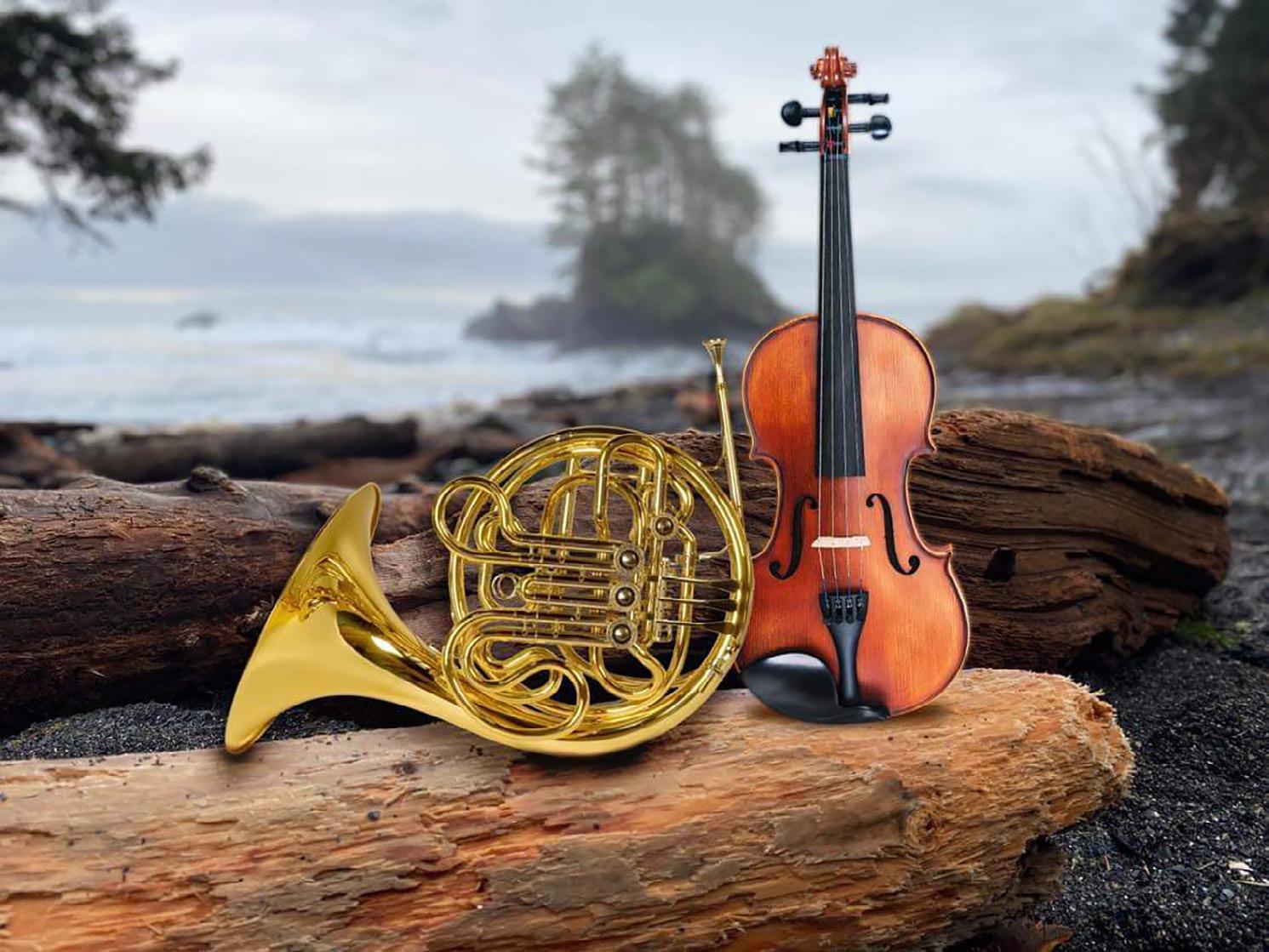
Jul 1 3– Aug 18
Footprints Security Opening Weekend Concert featuring Trooper: July 13, 2024
Tim Hortons FR EE Summer Concert Series
July 19, 20, 26 , 27, August 2, 3, 16 & 17, 2024
Mid Island Co-op Rock the Park Music Festival: August 9-11, 2024
Carol Riera/PREC Symphony by the Sea featuring the Vancouver Island Symphony: August 18, 2024 featuring